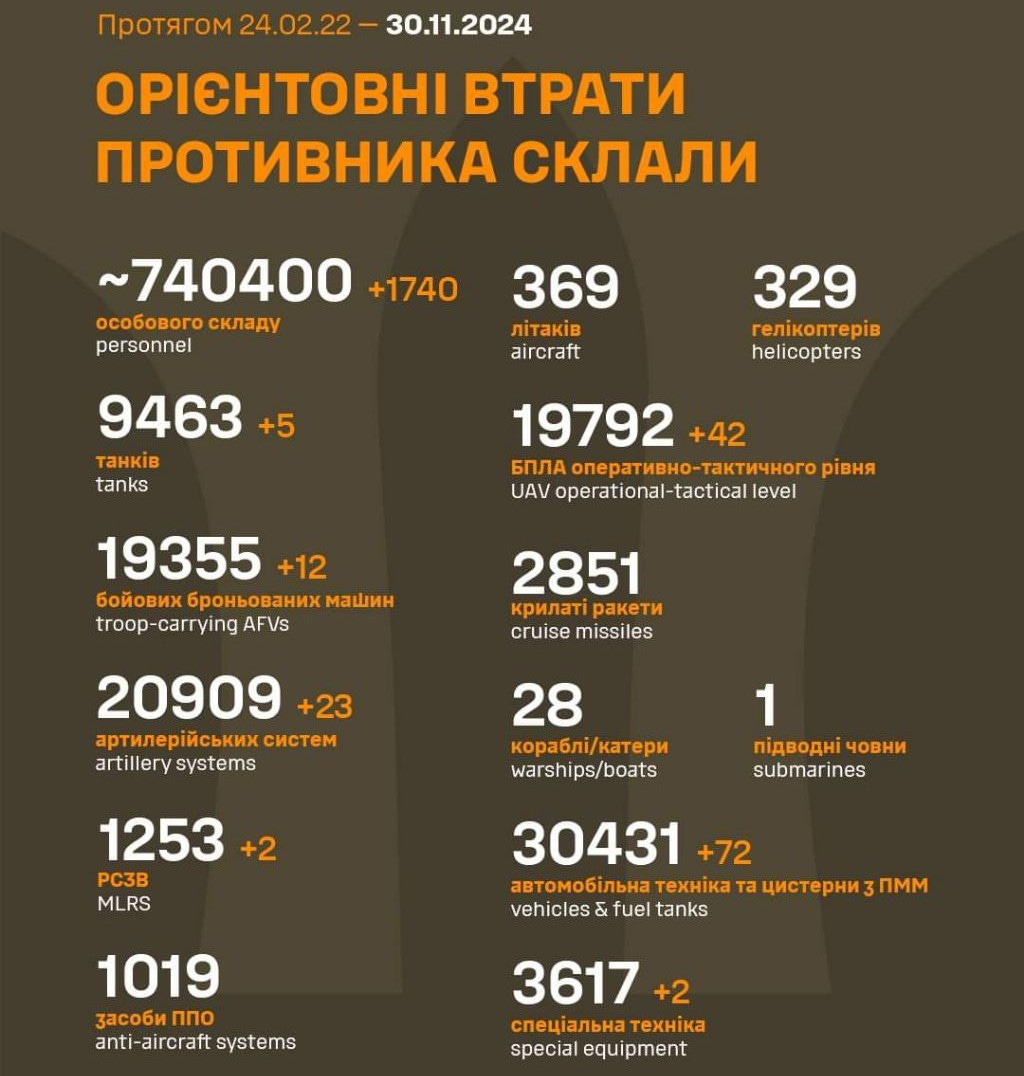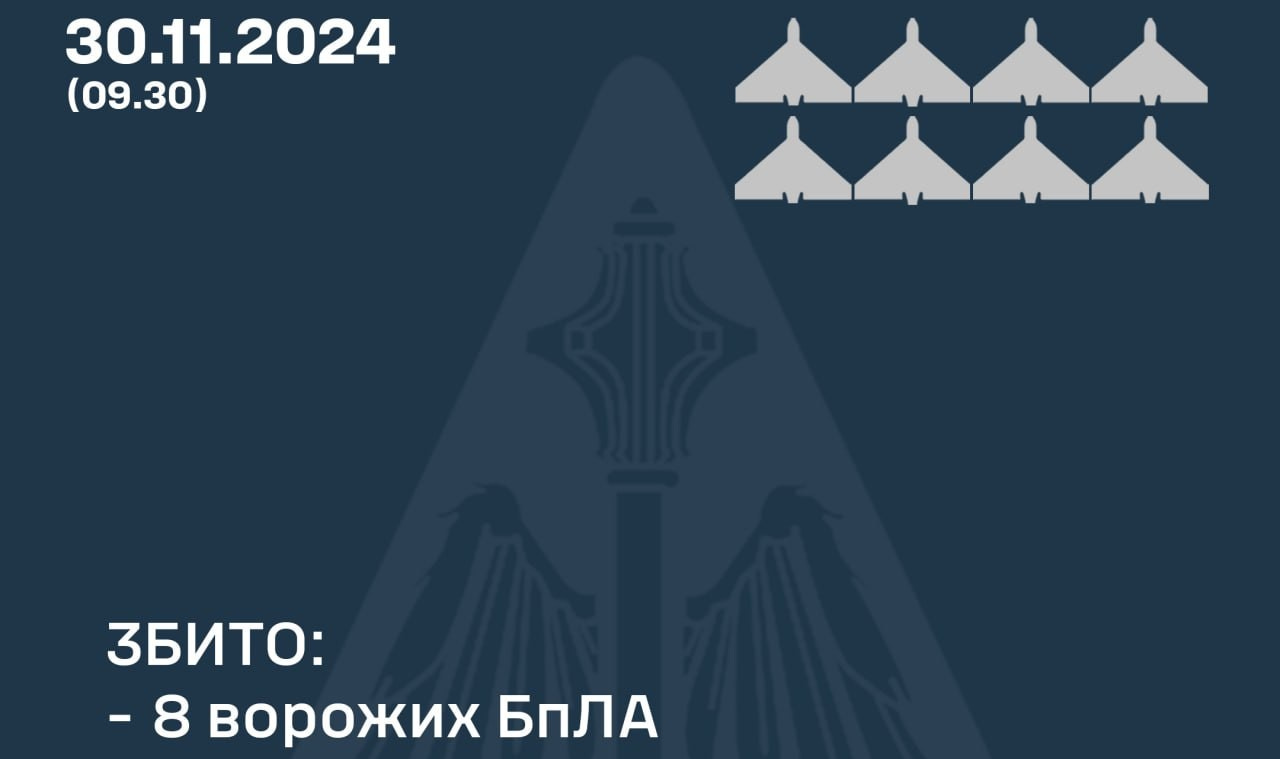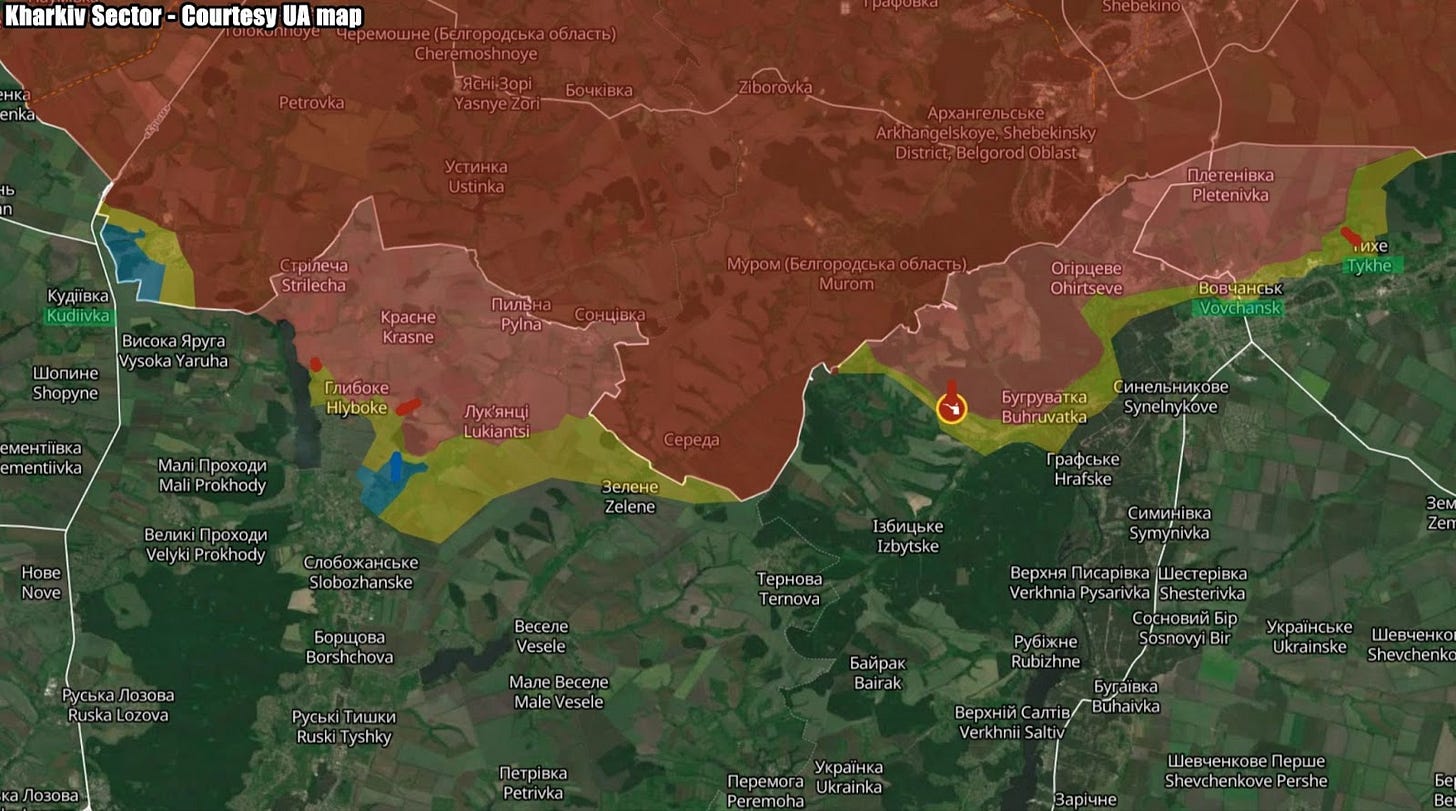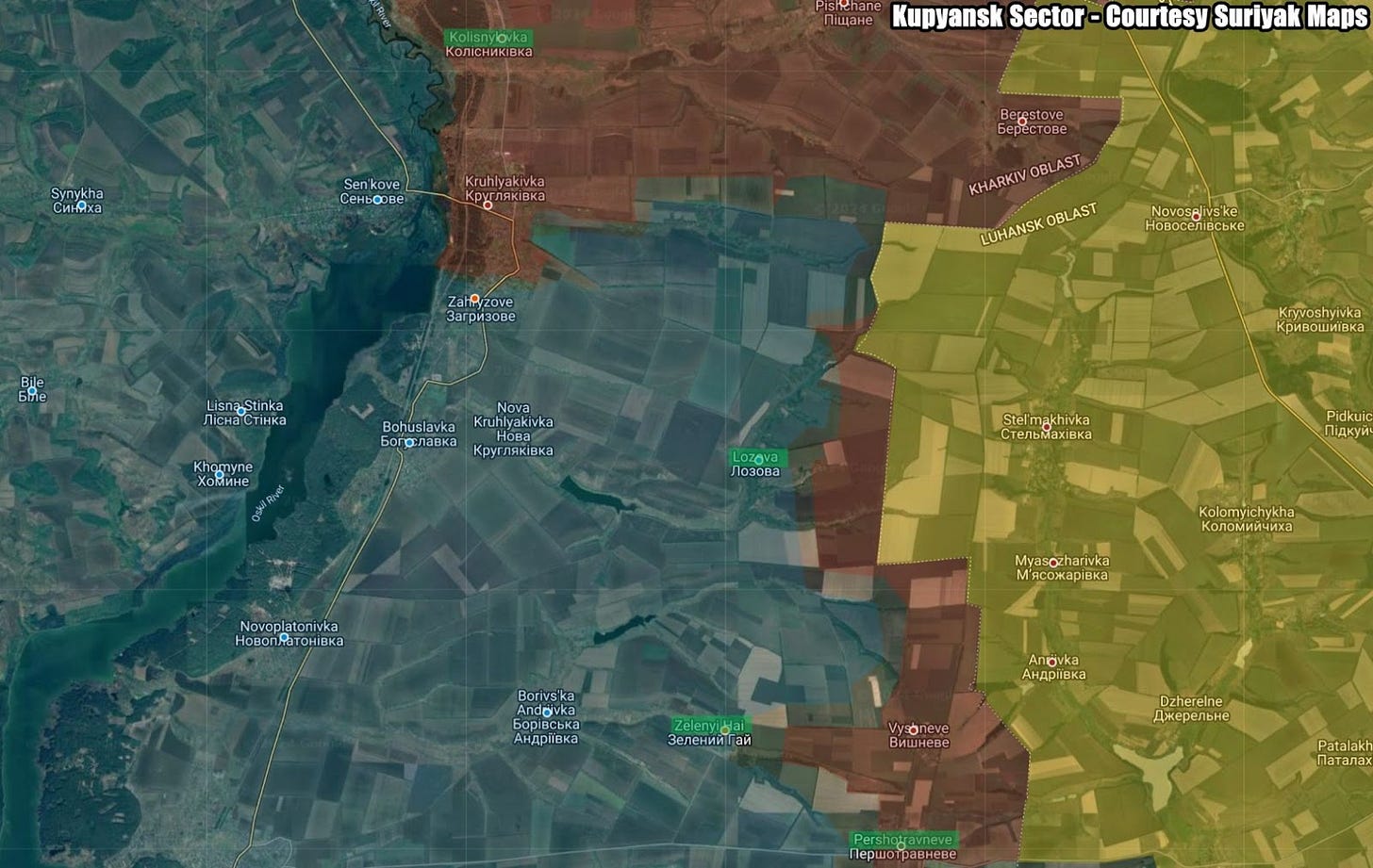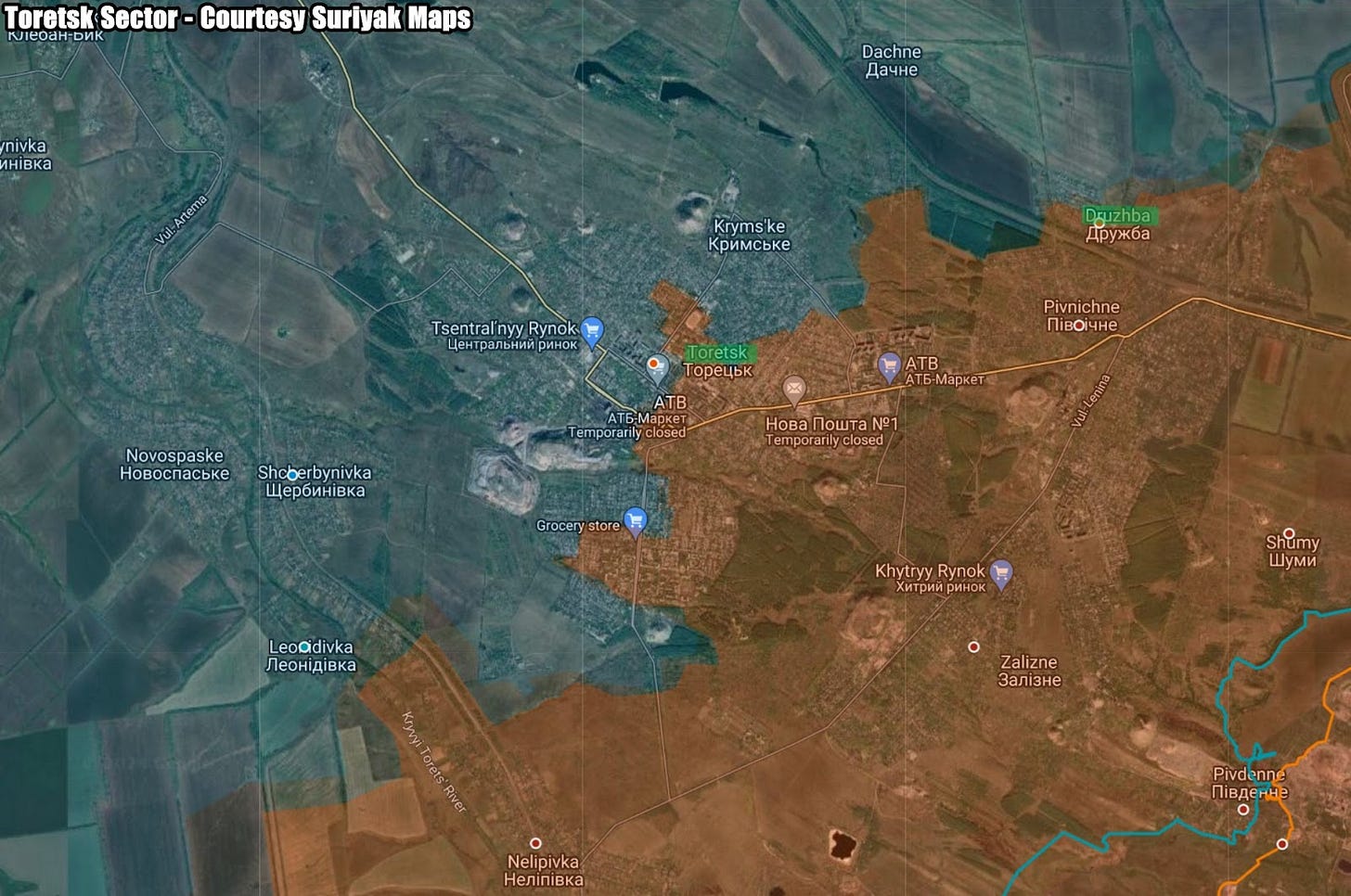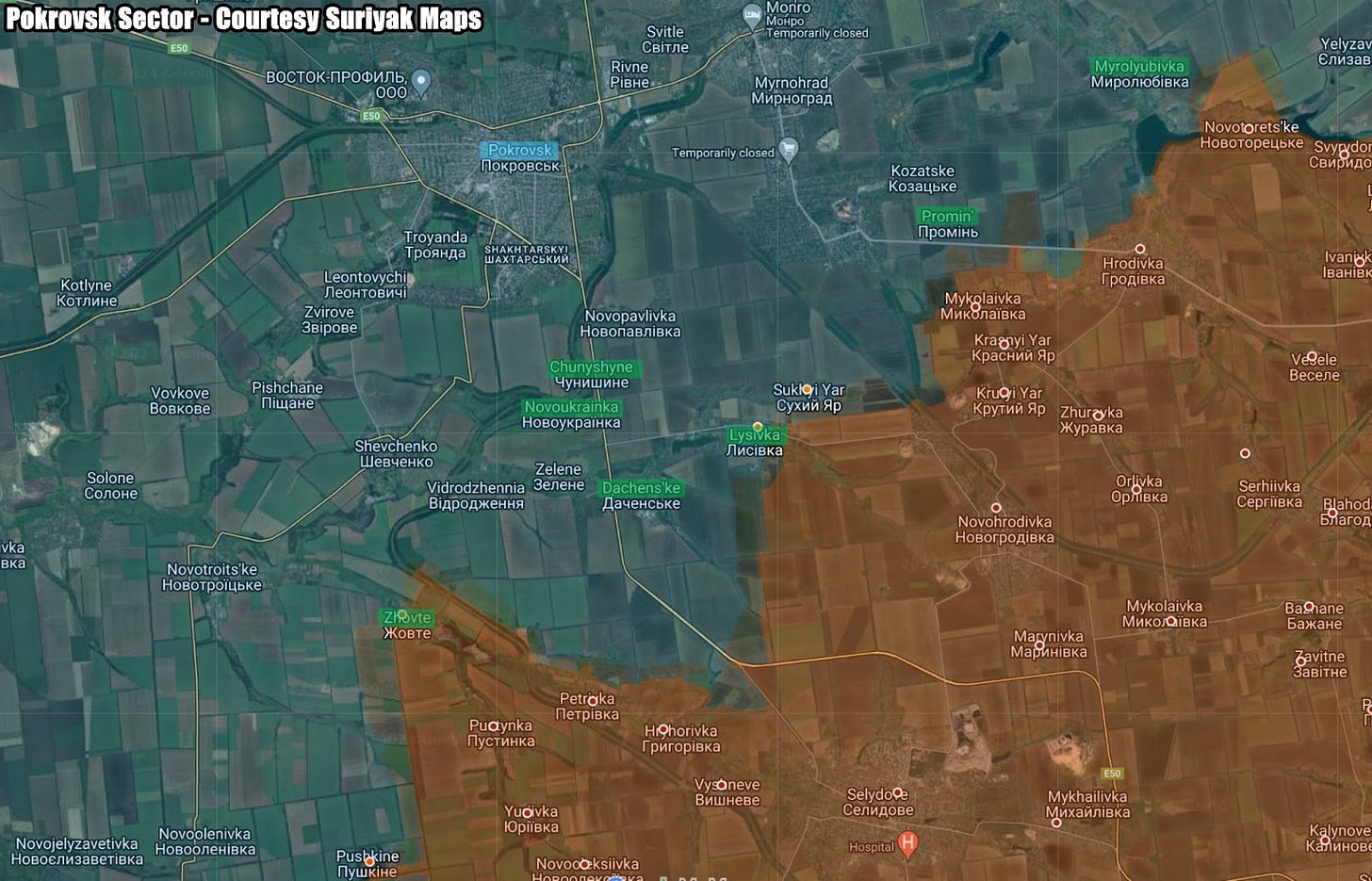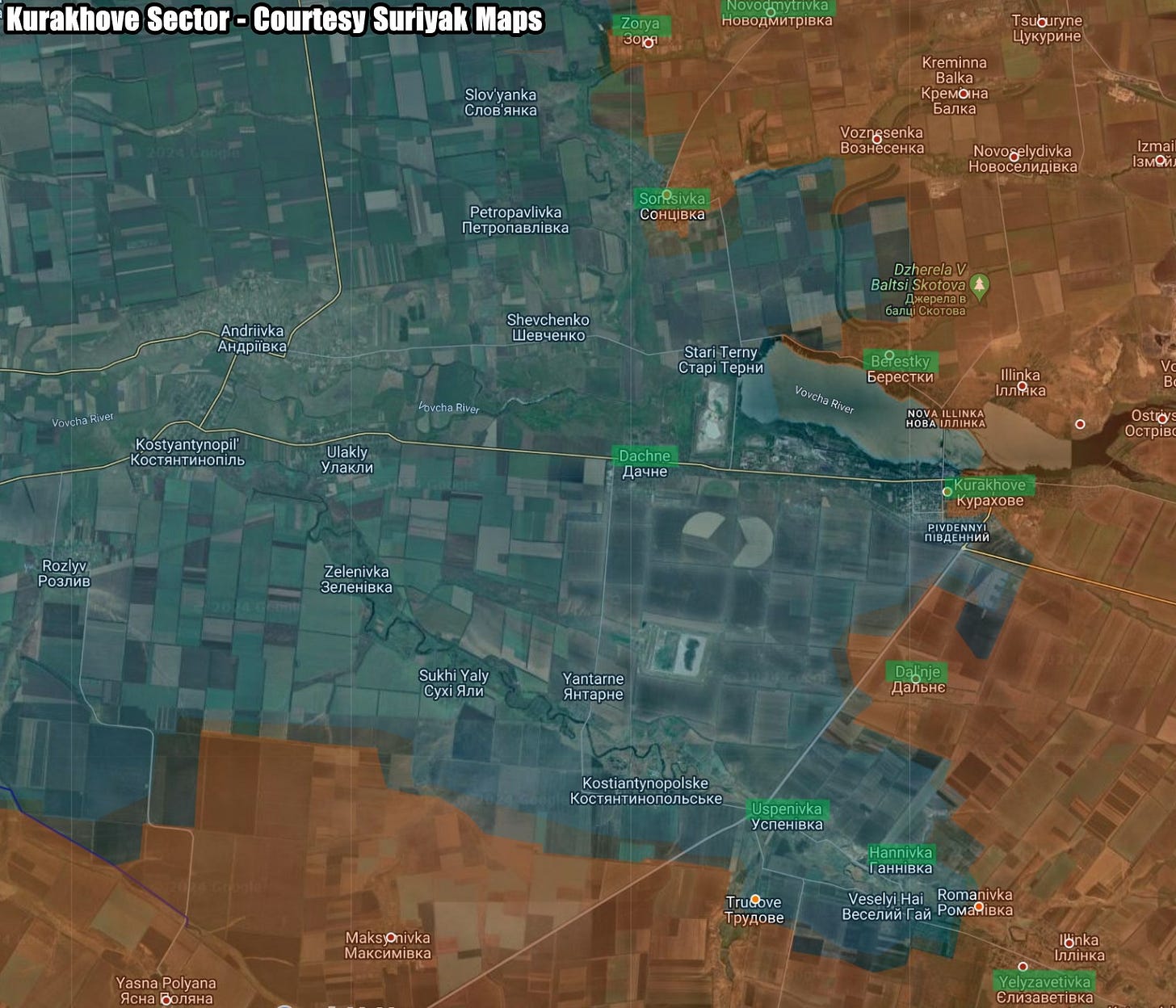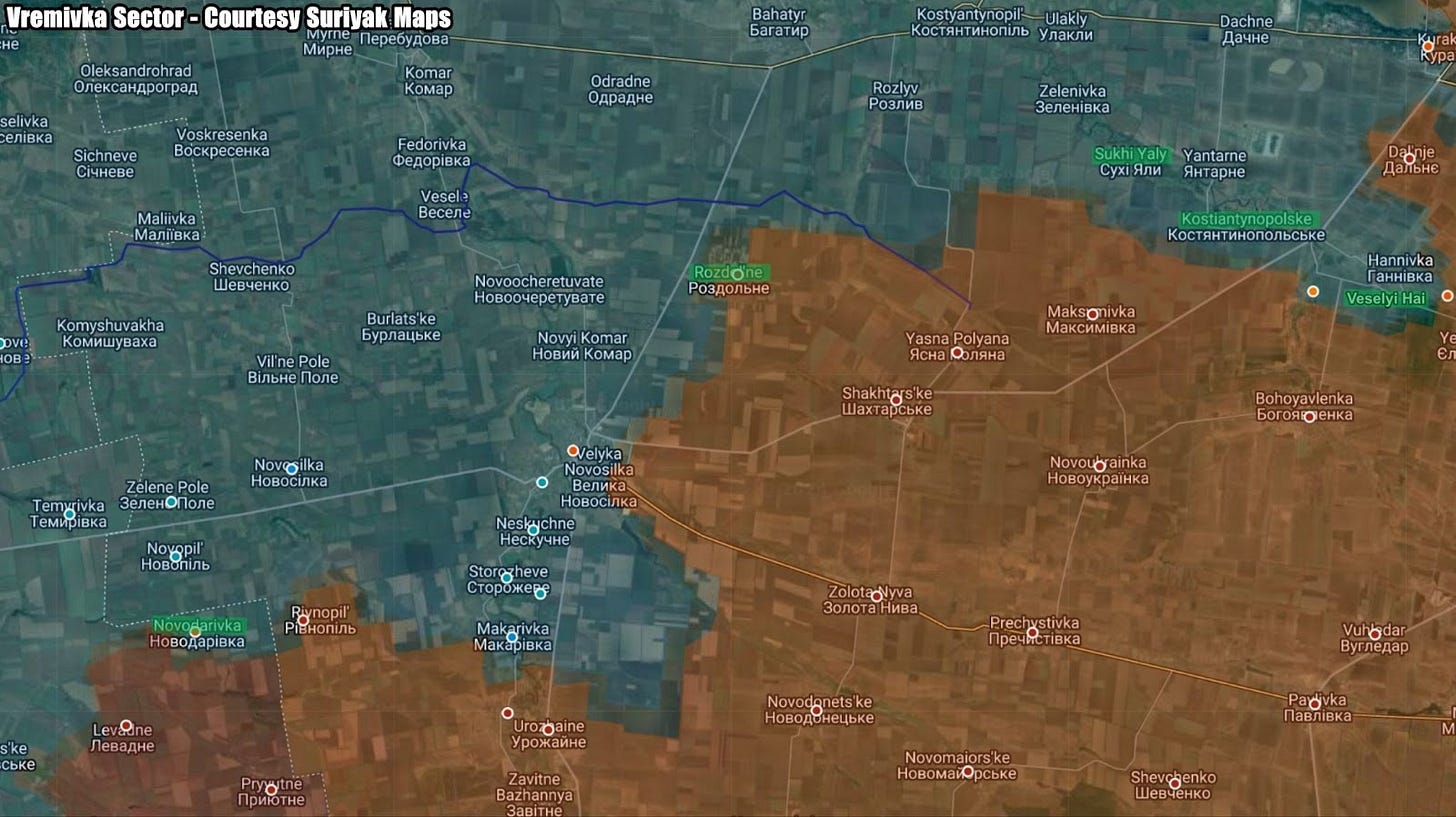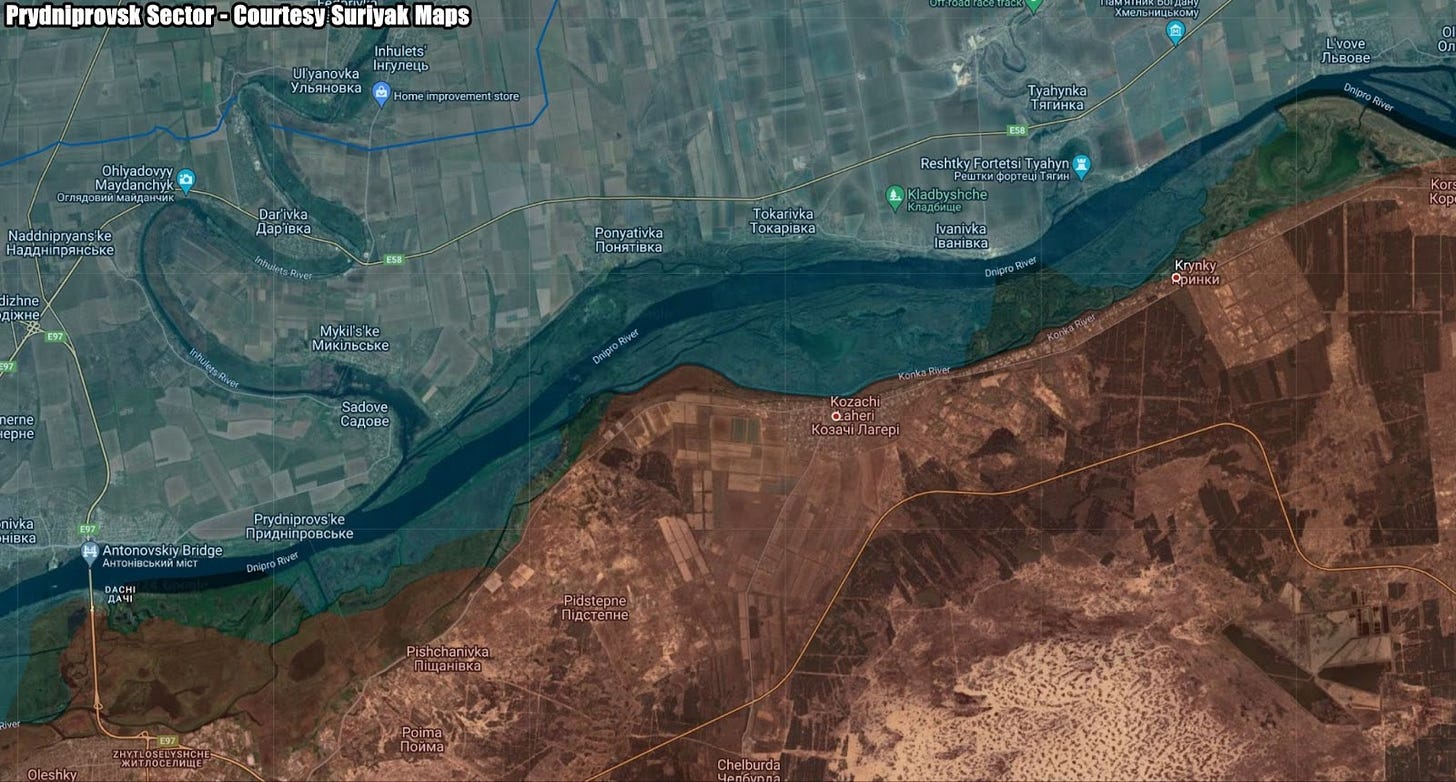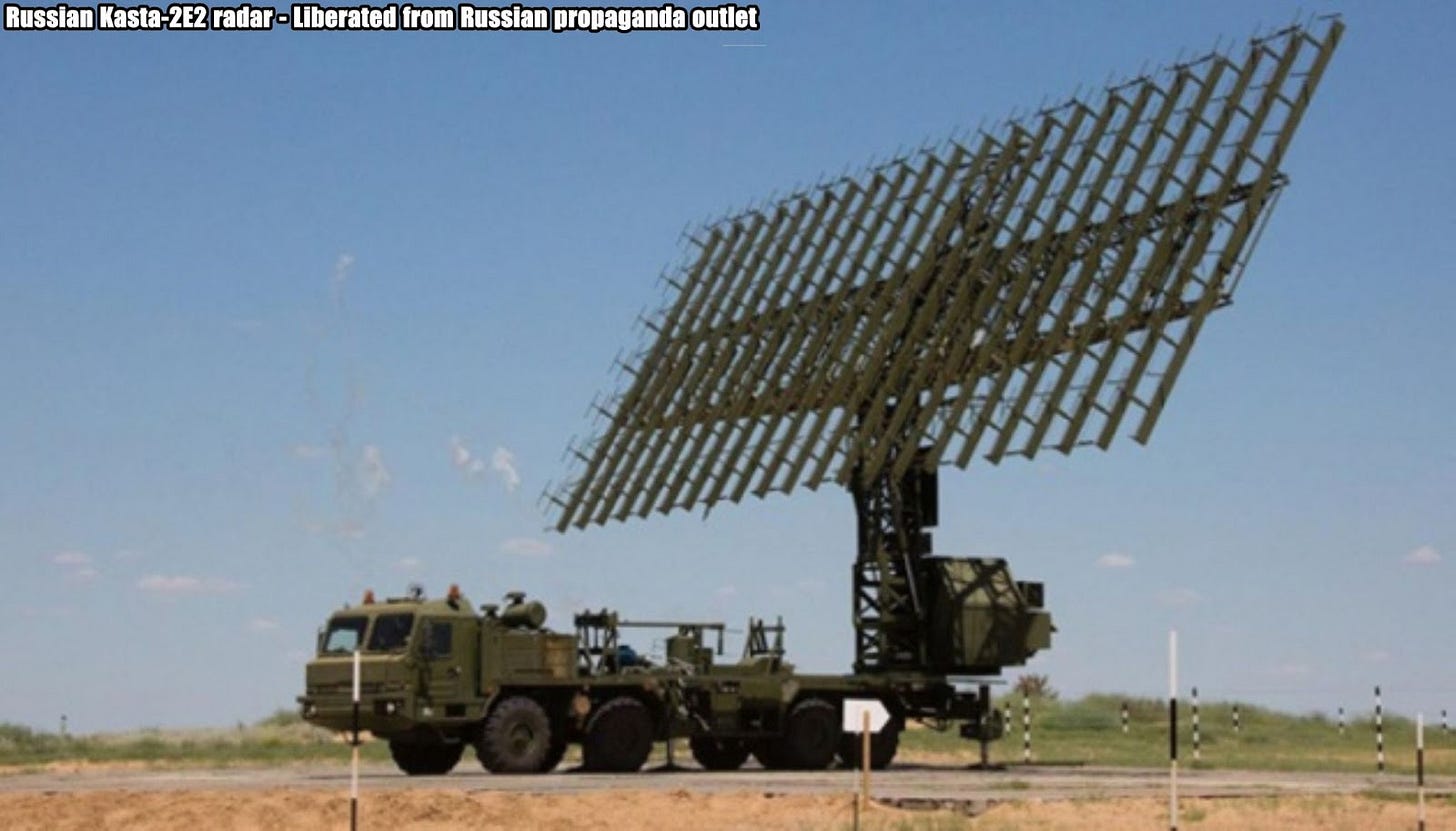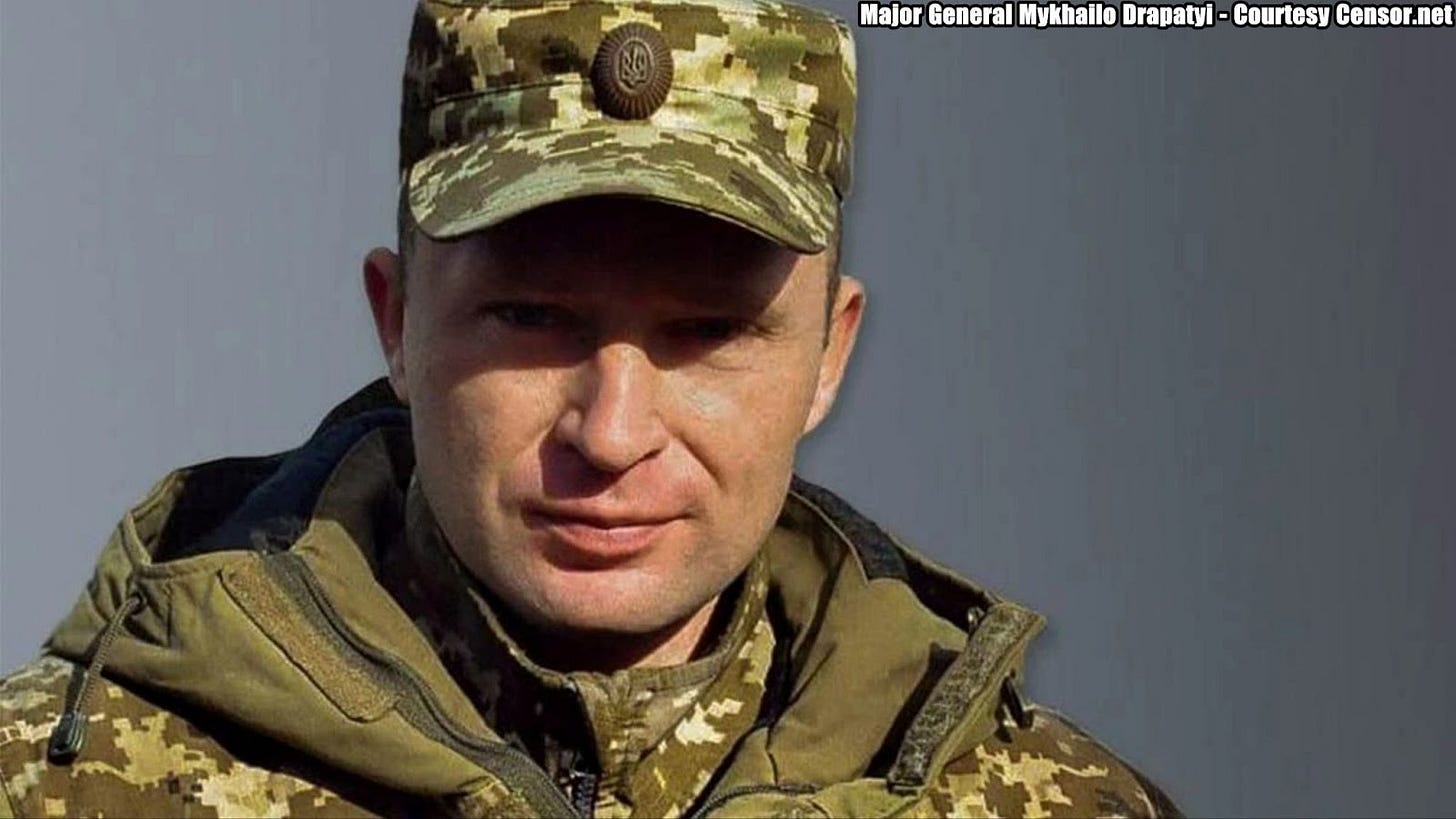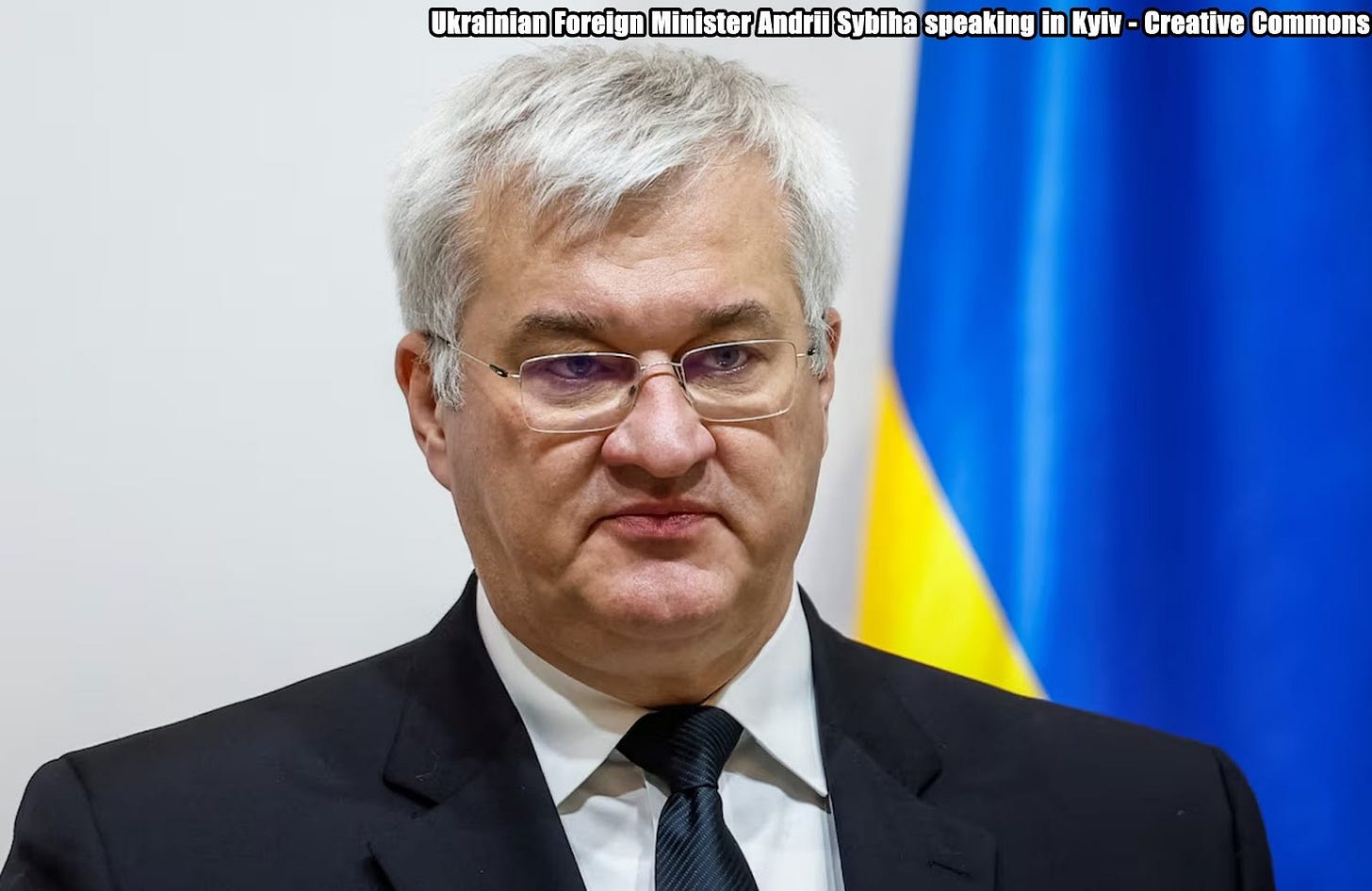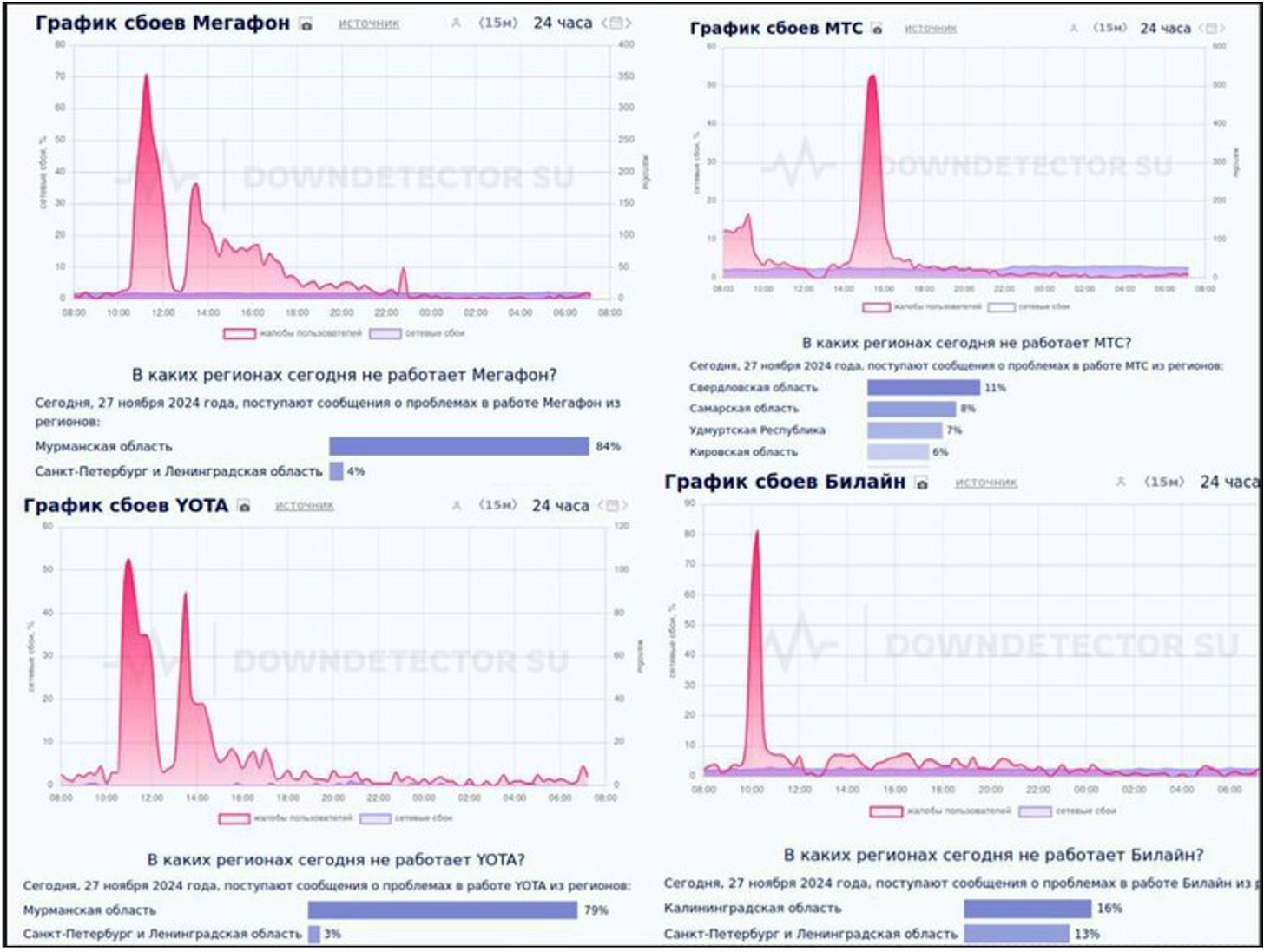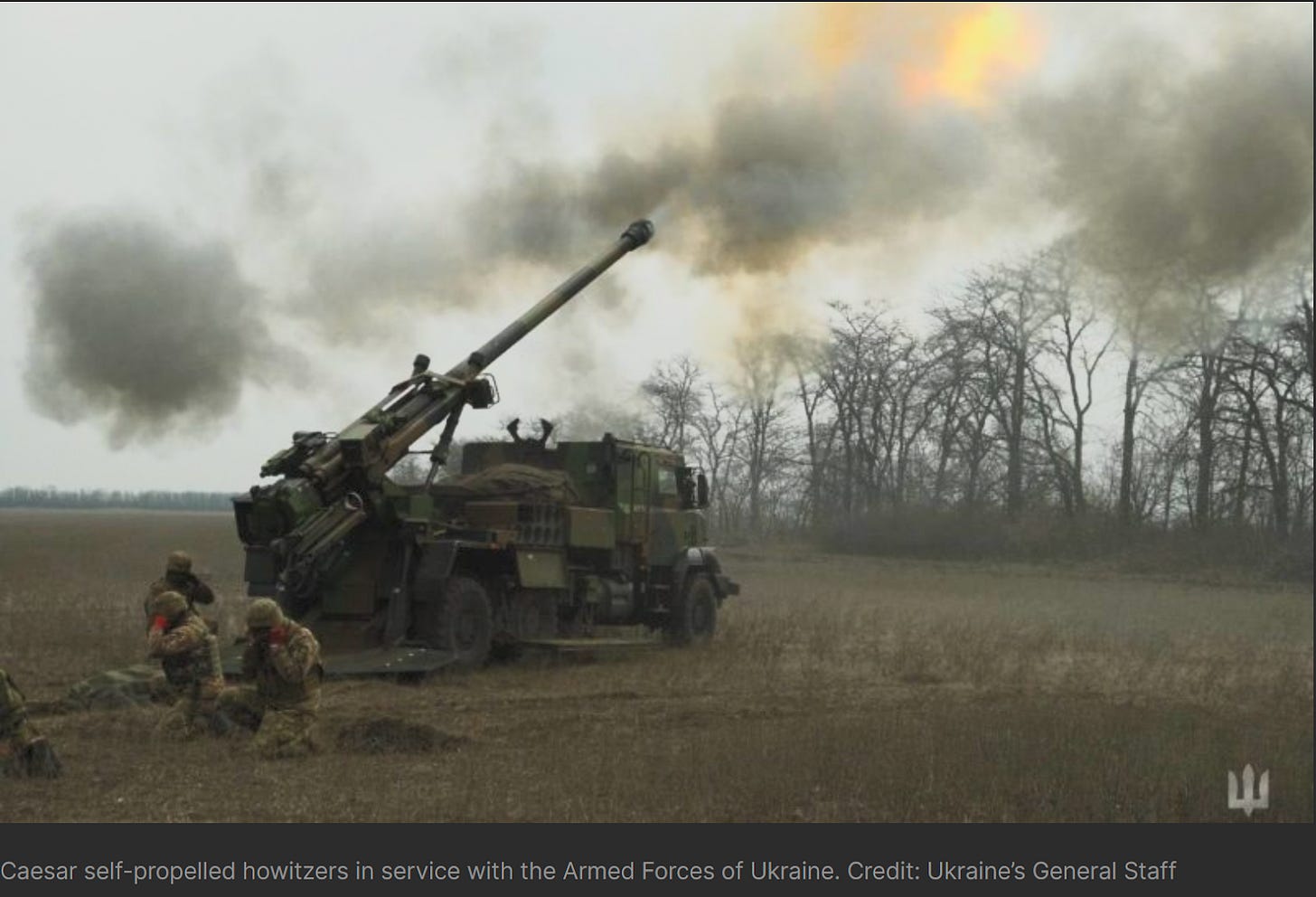Slava Ukraini! In early 2022 I began a Telegram channel aggregating news from a number of sources daily on the war in Ukraine. In June 2023 I began providing a daily draft for the Ukraine War Brief Podcast collecting news from over 70 sources daily, which formed the basis of the script. While the Podcast no longer exists I have continued to make this Brief available for my followers here on Substack for those who wish to keep up with the news from the war. A version of this Brief will also be made available on The People’s Media Substack for those who should choose to subscribe there.
All the latest news on the Russo-Ukraine War 6 days per week
ALONG THE CONTACT LINE
GSAFU Morning Report
The General Staff of the Armed Forces of Ukraine in its Operational Information update at 22:00 on Nov 29 stated that day 1011 of the full-scale invasion of the Russian Federation against Ukraine was about to begin.
During the past day, 172 combat engagements took place. Over the past 24 hours, the enemy carried out 1 missile strike, 31 air strikes, 581 drone strikes and more than 3,000 artillery strikes across the positions of Ukrainian forces.
At the same time, Ukrainian soldiers continue to inflict losses in manpower and equipment on the occupying troops, exhausting the enemy along the entire front line and continue to disrupt the plans of Russian occupiers to advance deeper into the territory of Ukraine.
Air Force Daily Report
On the night of Nov 30 2024 (from 21.30 November 29) the enemy attacked 10 "Shahed" type UAVs and unmanned type drones from Kursk and Primors чko-Akhtar - Russia.
As a result of the anti-air combat in Kyiv, Cherkasy, Kirovograd, Dnipropetrovsk and Kherson regions, eight enemy drones were shot down. One UAV was lost in location, another - flew to the occupied territory.
The Russian Border Incursion
The Institute for the Study of War (ISW), a US based think tank, in its Nov 29 Russian Offensive Campaign Assessment reported that Russian forces continued to counterattack in Ukraine's main salient in Kursk Oblast on Nov 28 and 29 but did not make any confirmed advances.
Russian milbloggers claimed that elements of the Russian 11th Airborne (VDV) Brigade seized two unspecified streets in Martynovka (northeast of Sudzha) and that elements of the 106th VDV Division advanced 1.6 kilometers near Darino and reached Nikolaevo-Darino (both southeast of Korenevo).
Russian milbloggers also claimed that Russian forces advanced east and southeast of Nizhny Klin (southeast of Korenevo), near Kamyshovka (north of Sudzha), and southwest of Pogrebki (northwest of Sudzha). ISW has not observed visual evidence confirming these claims.
A Ukrainian brigade operating in the Kursk direction reported on Nov 29 that it repelled a Russian reinforced platoon-sized mechanized assault in an unspecified area of Kursk Oblast and destroyed five of the six Russian armored vehicles using remote mining.
A spokesperson of a Ukrainian brigade operating in the Kursk direction reported that Russian forces are continuing to use a large number of armored vehicles including tanks to counterattack in Kursk Oblast and that Russian VDV elements are also using motorcycles and all-terrain vehicles (ATVs) in combat.
A Russian VDV-affiliated milblogger noted that foggy and rainy weather conditions are inhibiting Russian and Ukrainian drone operations in the Kursk direction.
Russian and Ukrainian forces reportedly continued combat engagements southeast of Korenevo near Novoivanovka and Darino; northeast of Sudzha near Martynovka; northwest of Sudzha near Malaya Loknya and Sverdlikovo; and south of Sudzha near Plekhovo on Nov 27, 28, and 29. Elements of the Russian 106th VDV Division's 51st, 119th, and 137th VDV regiments reportedly continue to operate near Nizhny Klin, Darino, and Sverdlikovo; assault elements of the 346th Motorized Rifle Regiment of the Mobilization Reserve reportedly continue to operate near Olgovka (east of Korenevo); and elements of the 83rd VDV Brigade reportedly continue to operate along the international border area in Suzhansky Raion. Elements of the Russian 810th Naval Infantry Brigade (Black Sea Fleet), 56th VDV Regiment (7th VDV Division), and of the "112" Separate Reconnaissance Battalion are reportedly operating in the Kursk direction.
The Khortytsia operational-strategic group
(Responsible for the northeastern part of Ukraine. )
Kharkiv Sector: Over the last day Ukrainian Defense Forces repelled 5 Russian attacks in the area of Kudivka, Vovchansk and Tykhe. 2 engagements are ongoing.
Kupyansk Sector: Russian Forces carried out 7 offensive actions against Ukrainian defensive positions near Kolisynivka, Lozova, Zelenyi Hai and Pershotravneve.
Lyman Sector: Russian Forces carried out 20 offensive actions against Ukrainian defensive positions near Hrekivka, Novolyubivka, Terny Yampolivka, Zarichne, Torske, Dibrova, the Serebryanskyy Forest and Hryhorivka. 2 engagements are ongoing.
Siversk Sector: In this sector, over the last day, there has been no significant change in the combat environment.
Kramatorsk Sector: Russian forces carried out 3 offensive actions against Ukrainian defences in the vicinity of Chasiv Yar and Bila Hora.
Toretsk Sector: Over the last day Russian forces carried out 2 offensive actions with air support near Druzhba and Toretsk.
The Tavria operational-strategic group
(Responsible for the central-eastern and southeastern part of Ukraine.)
Pokrovsk Sector : Over the last day in this sector, Russian Forces carried out 34 offensive actions against Ukrainian defensive positions in the vicinity of Myrolyubivka, Promin, Chunyshyne, Novoukrainka Lysivka, Dachenske and Zhovte. 10 engagements are ongoing.
Kurakhove Sector: Over the last day in this district Russia conducted 43 offensive actions in the vicinity of Novodmytrivka, Zorya, Sontsivka, Berestky, Dachne, Kurakhove, Dalnje, Uspenivka, Hannivka and Yelyzavetivka. 11 engagements are ongoing.
Vremivka Sector: Russian forces made 24 attempts to break through Ukrainian defences in the vicinity of Novopil, Novodarivka, Rozdolne, Sukhi Yaly, Kostiantynopolske and Veselyi Hai. 3 engagements are ongoing.
Orikhiv Sector: In this sector, over the last day, there has been no significant change in the combat environment.
The Odesa operational-strategic group
(Responsible for Kherson, Qırım, (also known as Crimea) and the Black Sea.)
Prydniprovsk Sector: In this sector, over the last day, there has been no significant change in the combat environment. Russian forces made 3 unsuccessful attempts to dislodge Ukrainian units from their positions.
TEMPORARILY OCCUPIED TERRITORIES
Ukraine destroys 3 more Russian radar systems in Qirim, HUR claims.
Ukraine destroyed three Russian high-value radar stations in Russian-occupied Qirim (Crimea) on Nov. 29, The Kyiv Independent reported citing Ukraine's military intelligence agency (HUR) on Nov. 30.
The radars include two 48Y6-K1 Podlet systems worth $5 million each and one Kasta-2E2 radar, estimated to cost around $30 million.
Both Kasta and Podlet are modern mobile radar systems designed to detect air targets at low and extremely low altitudes.
The report came just a day after HUR claimed to have struck another Podlet radar system in Crimea on Nov. 28.
HUR claimed to be behind both operations but didn't provide details. The Kyiv Independent couldn't verify the claims.
Multiple explosions were reported across Crimea over the past week, with Russian proxies claiming to have downed Ukrainian missiles and drones.
Ukraine has repeatedly targeted Russian military and industrial targets in Sevastopol and elsewhere in the occupied peninsula during the full-scale war.
Russia occupied Ukraine's Crimean Peninsula in 2014 before invading the east of the country in what marked the beginning of its aggression against modern-day Ukraine.
THE HOME FRONT
Zelenskyy names new land forces chief, says changes needed
Ukraine's President Volodymyr Zelenskyy replaced the commander of the military's land forces on Friday, putting Major General Mykhailo Drapatyi in charge, as Russia notches up gains in the east and Kyiv's troops face manpower shortages. Reuters reported.
Zelenskyy said "internal changes" were needed as he announced the 42-year-old would replace Lieutenant General Oleksandr Pavliuk, who took the helm of the land forces in a major shake-up in February 2024.
"The main task is to noticeably increase the combat efficiency of our army, ensure the quality of servicemen training, and introduce innovative approaches to people management in Ukraine's Armed Forces," Zelenskyy said.
"The Ukrainian army needs internal changes to achieve our state's goals in full," he said on Telegram after meeting his top military and government officials.
Drapatyi is well respected in the army and military analysts praised his appointment. Drapatyi took command of the Kharkiv front in May and managed to stop the Russian offensive in the northeast, stabilizing the front.
Zelenskyy also said that he appointed Colonel Oleh Apostol, commander of the 95th separate air-assault brigade, as a deputy to army chief Oleksandr Syrskyi.
He praised both Drapatyi and Apostol, saying "they had proved their efficiency on the battlefield".
Ukraine is on the back foot on the battlefield as it fights a much bigger and better-equipped enemy 33 months after Russia's full-scale invasion in February 2022.
Russian forces are steadily advancing in the eastern Donetsk region. Syrskyi, the army chief, said on Friday he would strengthen troops deployed on the eastern front with reserves, ammunition, and equipment as he visited two key Ukrainian-held sites in the Donetsk region.
Ukraine has also lost about 40% of the territory it captured in Russia's Kursk region in a surprise incursion in August, as Russian forces have mounted waves of counter-assaults.
The head of the land forces oversees mobilization efforts during the war.
Military analysts say Ukraine's military is experiencing manpower shortages, making it harder to rotate troops out of the more than 1,000 kilometres (620 miles) of frontline or to build up reserve forces.
RUSSIAN WORLD
Russia’s attempts to organize drone detachments is predictably having the opposite effect.
The Institute for the Study of War (ISW), a US based think tank, in its Nov 29 Russian Offensive Campaign Assessment reported that The Russian military's efforts to reorganize informal drone detachments into centralized, specialized military units are already introducing significant dysfunction into the Russian military.
The Russian military is considering establishing a separate service branch for unmanned systems, likely as part of the Russian MoD’s in a belated effort to catch up to the establishment of the Ukrainian Unmanned Systems Forces (USF) in Febr 2024. Russian President Vladimir Putin stated at the press conference during his visit to Kazakhstan on Nov 28 that the Russian MoD and General Staff are considering establishing a new unmanned system service within the Russian Armed Forces and emphasized that drones are one of the most important factors of combat operations.
A former Russian Storm-Z instructor and milblogger responded to Putin's Nov 28 discussion of the unmanned systems service, stating there is a risk that the Russian MoD will try to formalize and monopolize drone supplies to the new unmanned systems service, which will erode a competitive and flexible environment conducive to innovation. The milblogger observed that it is also unclear how the Russian military command will integrate the new drone service with the other combat operations, namely how this centralized initiative will impact the Russian tactical reconnaissance strike complex.
The milblogger added that the new unmanned systems service is unlikely to prevent the Russian military command from committing drone operators to assaults given that Russian tank, engineering, artillery, and signals specialists are actively fighting as infantry in the event of manpower shortages despite being different classes of forces.
Russian milbloggers previously claimed that the Russian MoD had been trying to form "joint technical drone battalions" by systematically disbanding informal Russian drone detachments and connected these efforts to the establishment of the "Rubikon" Center. Russian milbloggers previously observed that Russian military commanders may have been increasingly committing drone operators to deadly assault operations in anticipation that the Russian MoD would deprive them of necessary manpower by reallocating these forces into MoD-operated "technical drone battalions." Russian milbloggers also criticized the Russian MoD's efforts to establish separate, specialized “technical drone battalions,” citing the lack of a joint Russian communications system that would allow dedicated drone units to closely coordinate with assault units.
INTERNATIONAL NEWS
Ukraine asks NATO for membership invite next week, letter shows
Reuters reported on Nov 29 that Ukrainian Foreign Minister Andrii Sybiha has urged his NATO counterparts to issue an invitation to Kyiv at a meeting in Brussels next week to join the Western military alliance, according to the text of a letter seen by Reuters on Friday.
The letter reflects Ukraine's renewed push to secure an invitation to join NATO, which is part of a "victory plan" outlined last month by President Volodymyr Zelenskyy to end the war triggered by Russia's 2022 invasion.
Zelenskyy told UK-based Sky News that offering Ukraine NATO membership while allowing Russia to keep for the moment territory it had captured could be a solution to end the "hot stage" of the 33-month-old war.
Ukraine says it accepts that it cannot join the alliance until the war is over but extending an invitation now would show Russian President Vladimir Putin that he could not achieve one of his main goals - preventing Kyiv from becoming a NATO member.
"The invitation should not be seen as an escalation," Sybiha wrote in the letter."On the contrary, with a clear understanding that Ukraine's membership in NATO is inevitable, Russia will lose one of its main arguments for continuing this unjustified war," he wrote.
"I urge you to endorse the decision to invite Ukraine to join the Alliance as one of the outcomes of the NATO Foreign Ministerial Meeting on 3-4 December 2024."
Zelenskiy told Sky News an invitation had to be officially extended to the entire country as Ukraine had no legal right to recognise any of its territory as Russian. NATO membership could then initially apply to only the part of Ukraine that Kyiv controls.
"No one has offered us to be in NATO for one part or another part of Ukraine. The fact is, it is a solution to stop the hot stage of the war because we can just give NATO membership to the part of Ukraine that is under our control," Zelenskyy said.
"But the invitation must be given to Ukraine within its internationally recognised borders ... That's what we need to do fast and then Ukraine can get back the other part of its territory diplomatically."
NATO diplomats say there is no consensus among alliance members to invite Ukraine at this stage. Any such decision would require the consent of all NATO's 32 member countries.
NATO has declared that Ukraine will join the alliance and that it is on an "irreversible" path to membership. But it has not issued a formal invitation or set out a timeline.
Olga Stefanishyna, Ukraine's deputy prime minister in charge of NATO affairs, said Kyiv understood that the consensus for an invitation to join NATO "is not yet there" but the letter was meant to send a strong political signal.
"We have sent a message to the allies that invitation is not off of the table, regardless of different manipulations and speculations around that," she told Reuters.
In his letter, Sybiha argued an invitation would be the right response "to Russia's constant escalation of the war it has unleashed, the latest demonstration of which is the involvement of tens of thousands of North Korean troops and the use of Ukraine as a testing ground for new weapons".
In recent days, however, diplomats have said they do not see any changes of stance among NATO countries, particularly as they await the Ukraine policy of the United States - the alliance's dominant power - under the incoming administration of President-elect Donald Trump.
MILITARY & TECH
Ukrainian IT army has paralyzed Russian communications and Internet: $360 million in damage caused
Hackers of Ukraine's IT army have paralyzed Russian communications and the Internet, and there has been a large-scale failure of Russia's largest operators. Censor.net reported on Nov 30 citing the Ministry of Digital
As noted, such major Russian operators as Megafon, MTS, YOTA, Beeline, Rostelecom, T2, Tinkoff Mobile experienced a large-scale failure. There were also interruptions on Telegram and Discord, which the enemy actively uses to coordinate its actions.
It is reported that the operation of the Ukrainian IT army caused the enemy economic losses of up to $360 million.
How Soon Will the Mirage 2000-5F Fighter Jets Arrive in Ukraine
In his evening address on Nov 29, President of Ukraine Volodymyr Zelenskyy noted a conversation with president of France Emmanuel Macron. The conversation was aimed at strengthening Ukraine's air defense, as well as "comprehensive defense support and accelerating the transfer of Mirage aircraft." Defense Express reports.
On the one hand, this report can be seen as a reason to mention the transfer of these aircraft, but on the other hand, it emphasizes that work on the Mirage aircraft for the Defense Forces of Ukraine is ongoing, and that soon we will see another type of fighter jet in service with the Ukrainian Air Force. This message is an occasion to recall the chronology of public statements and media publications regarding these aircraft in recent months.
It should be noted that Emmanuel Macron officially announced the transfer of Mirage 2000-5 to Ukraine on June 6. At that time, a six-month timeframe was announced, taking into account the training process (i.e., approximately by December of this year). In mid-July, the Ambassador Extraordinary and Plenipotentiary of the French Republic to Ukraine, Gael Vessier, announced a shorter timeframe for the transfer of the fighter jets — namely, a few months — but it seems that this was either a stipulation or a PR stunt.
In October, French Minister of the Armed Forces Sébastien Lecornu gave a more restrained prediction, noting that Ukraine should expect Mirage aircraft in the first quarter of 2025. That is, the delivery of the aircraft may be extended until the end of March.
In addition, it is worth noting that while the media initially reported only three Mirage 2000-5s would be delivered to the Ukrainian Air Force, it was later reported in November that this number would increase to six aircraft.
Later, the French said that in order to deliver this number of aircraft, they needed to accelerate production from 3 to 4 Rafale aircraft per month. This could also negatively impact the timing, as France later admitted that the situation with the Rafale was not very encouraging, with only nine of the 15 planned fighters delivered this year. On the other hand, it could serve as a form of public communication for self-reassurance, indicating that the French are monitoring the combat capability of their air force and that the transfer of aircraft to Ukraine should not affect this factor.
If we are talking about speeding up the delivery of Mirage aircraft to Ukraine, it is likely to take about a month and a half. If the projections are positive, the aircraft could be in service with the Ukrainian Air Force by January or February. However, as practice often shows, such timeframes are usually extended.
French CAESAR Gun Variant is Better, Ukrainian Artilleryman Says
The French CAESAR artillery system is a simple yet reliable combat vehicle that helps Ukrainian forces drive back the russian invasion army. Defense Express reports.
Over the past one and a half years, the Ukrainian Defense Forces have acquired dozens of CAESAR self-propelled 155mm artillery systems as military aid from allies — primarily from France and Denmark. Hearing positive reviews from the military, the Ukrainian government also recently bought 12 units directly from KNDS France.
The 55th Artillery Brigade troops are among those praising the self-propelled gun. In an interview with ArmyInform journalists, crew commander Andrii said his people work with the older version of the CAESAR, produced in 2007, and they wouldn't change it for the newer versions.
"Because the new one is much larger: it has four axles, not three, it is longer and higher. It is difficult to hide it in the greenery, you have to dig a much larger caponier, and it's also not as maneuverable. It has much more electronics, thus increasing the likelihood of some kind of breakdown," Andrii says of the latest versions of the French self-propelled gun.
Defense Express notes, Ukraine has both the CAESAR 6x6 variant, operated by the French Armed Forces, and the 8x8 variety in use with the Danish military. Both countries supplied Ukraine with the respective variety of systems from their own stocks: 30 from France and 19 from Denmark.
Speaking of the maintenance his CAESAR requires, artilleryman Andrii says some of the work can be done right on the site, some other fixes can be handled by Ukrainian repair specialists who studied in France, but more difficult operations need the vehicle to be sent to the manufacturer.
On a related note, KNDS announced the establishment of a subsidiary in Ukraine earlier this June. According to the letter of intent signed between the pan-European defense company and Ukraine, a service center will be created to provide service and repair for CAESARs; in particular, the sides discussed the possibility of printing spare parts locally.
Another practical aspect of operating CAESAR that the Ukrainian artillery personnel points out is the service life of the barrel: the team has fired 4,000 rounds with their current gun. Despite the unavoidable wear and tear, the barrel's condition remains satisfactory. Andrii recalls, there were barrels with shot count over 6,000 rounds.
That’s it for today’s Brief folks if you would like to keep up with events in Ukraine daily please consider subscribing.
Feel free to share this update with your friends. Heroyam Slava!







